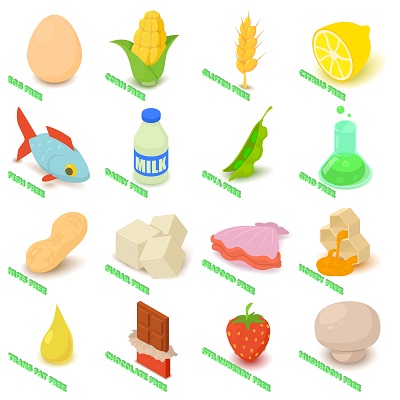 Your digestive system is a complicated system. It may seem simple. You eat, you absorb, you eliminate. However, there are many steps taken to complete this process and many chemicals are necessary for things to go smoothly.
Your digestive system is a complicated system. It may seem simple. You eat, you absorb, you eliminate. However, there are many steps taken to complete this process and many chemicals are necessary for things to go smoothly.
You use enzymes, minerals, and even bacteria to digest foods. And when one of these elements is out of balance, or not working optimally, the whole system goes off the rails. One of the effects of an imbalance in your system can be a food sensitivity.
Food sensitivities can cause headaches, skin problems including acne, and of course digestive problems including gas, bloating, constipation and diarrhea. So how do you know if you have a food sensitivity and what the offending food might be? There are actually a few methods you can use.
Food Journal
Keep a food journal. Track everything that you eat. You don’t have to track the amounts or calories, simply the substance. However, it is important to be detailed. For example, if you have barbecue sauce, make sure to write down the ingredients. You’re likely to find both gluten and dairy in many condiments. You’ll also want to learn the language of labels.
For example, casein is a dairy protein. If you’re sensitive or allergic to dairy, you can have a reaction to a sauce simply because casein is an ingredient. Gluten, soy, corn, dairy, nuts, and eggs are common allergens. You’ll also want to pay attention to any symptoms you experience. Look for skin irritation including acne.
Evaluate your energy level, sleep quality, mental clarity, and your gastrointestinal system. Take notes. Over time you may notice patterns. For example, after you eat tortilla chips you may notice acne and diarrhea. That’s a sure sign that you’re sensitive to corn.
Elimination Diet
Another approach to identify food sensitivities is to go on an elimination diet. An elimination diets lasts two weeks. It requires careful planning and attention to the ingredients in your food. The most common elimination diet cuts out dairy, soy, gluten, corn, and sometimes eggs and nuts. Once you’ve completed two weeks without these foods, you will gradually try them.
For example, for the first week after your elimination diet you might try adding some dairy back into your diet. You might have a glass of milk. Don’t go overboard. If you are sensitive to a food you’ll notice a physical reaction. You may feel sick. You may have stomach problems or get a headache or experience an acne breakout. Ease back into each of the foods and track any symptoms you might experience. If you don’t have any symptoms, it’s likely safe to eat that food.
Food sensitivities are becoming more common. It may be environmental, genetic, or a combination of both. By identifying the foods that cause problems, you can improve your digestive health and your wellbeing.






